Lesson 13
Congruence
13.1: Not Just the Vertices (5 minutes)
Warm-up
Polygons are special shapes because once we know the vertices, listed in order, we can join them by line segments to produce the polygon. This is important when performing rigid transformations. Because rigid transformations take line segments to line segments, once we track where the vertices of a polygon go, we can join them in the correct order with segments to find the image of the polygon.
In this warm-up, students begin to explore this structure, finding corresponding points in congruent polygons which are not vertices.
Launch
Give 3 minutes quiet think time followed by 2 minutes for a whole-class discussion.
Student Facing
Trapezoids \(ABCD\) and \(A’B’C’D’\) are congruent.
- Draw and label the points on \(A’B’C’D’\) that correspond to \(E\) and \(F\).
- Draw and label the points on \(ABCD\) that correspond to \(G’\) and \(H’\).
- Draw and label at least three more pairs of corresponding points.

Student Response
For access, consult one of our IM Certified Partners.
Anticipated Misconceptions
Students may struggle to find corresponding points that are not vertices. Suggest that they use tracing paper or the structure of the grid to help identify these corresponding points.
Activity Synthesis
Remind students that when two figures are congruent, every point on one figure has a corresponding point on the other figure.
Ask students what methods they used to find their corresponding points. Possible answers include:
- Using the grid and the corresponding vertices to keep track of distances and place the corresponding point in the right place
- Using tracing paper and rigid motions taking one polygon to the other
13.2: Congruent Ovals (10 minutes)
Activity
This activity begins a sequence which looks at figures that are not polygons. From the point of view of congruence, polygons are special shapes because they are completely determined by the set of vertices. For curved shapes, we usually cannot check that they are congruent by examining a few privileged points, like the vertices of polygons. We can ascertain that they are not congruent by identifying a feature of one shape not shared by the other (for example, this oval is 3 units wide while this one is only \(2 \frac{1}{2}\) units wide). But to show that two curved shapes are congruent, we need to apply the definition of congruence and try to move one shape so that it matches up exactly with the other after some translations, rotations, and reflections.
In this activity, students begin to explore the subtleties of congruence for curved shapes. Make sure that students provide a solid mathematical argument for the shapes which are congruent, beyond saying that they look the same. Providing a viable argument, MP3, requires careful thinking about the meaning of congruence and the structure of the shapes. Monitor for groups who use precise language of transformations as they attempt to move one traced oval to match up perfectly with another. Invite them to share their reasoning during the discussion. Also monitor for arguments based on measurement for why neither of the upper ovals can be congruent to either of the lower ones.
Launch
Arrange students in groups of 2. Provide access to geometry toolkits. Give students 3 minutes of quiet work time, then invite them to share their reasoning with a partner, followed by a whole-class discussion.
Supports accessibility for: Social-emotional skills; Conceptual processing
Speaking: Math Language Routine 5 Co-Craft Questions. This is the first time Math Language Routine 5 is suggested as a support in this course. In this routine, students are given a context or situation, often in the form of a problem stem with or without numerical values. Students develop mathematical questions that can be asked about the situation. A typical prompt is: “What mathematical questions could you ask about this situation?” The purpose of this routine is to allow students to make sense of a context before feeling pressure to produce answers, and to develop students’ awareness of the language used in mathematics problems.
Design Principle(s): Cultivating Conversations; Maximize meta-awareness
How It Happens:
-
Display the four images of the ovals without the directions.
Ask students, “What mathematical questions could you ask about this situation?”
-
Give students 1 minute of individual time to jot some notes, and then 3 minutes to share ideas with a partner.
As pairs discuss, support students in using conversation skills to generate and refine their questions collaboratively by seeking clarity, referring to students’ written notes, and revoicing oral responses, as necessary. Listen for how students use language about transformations and/or refer to measurements of the figures when talking about the curved polygons.
-
Ask each pair of students to contribute one written question to a poster, the whiteboard, or digital projection. Call on 2–3 pairs of students to present their question to the whole class, and invite the class to make comparisons among the questions shared and their own questions.
Listen for questions comparing different features of the ovals to determine congruence, especially those that use distances between corresponding points. Revoice student ideas with an emphasis on measurements wherever it serves to clarify a question.
-
Reveal the question, “Are any of the ovals congruent to one another?” and give students a couple of minutes to compare it to their own question and those of their classmates. Identify similarities and differences.
Consider providing these prompts: “Which of your questions is most similar to/different from the one provided? Why?”, “Is there a main mathematical concept that is present in both your questions and the one provided? If so, describe it.”, and “How do your questions relate to one of the lesson goals of measuring corresponding points to determine congruence?”
-
Invite students to choose one question to answer (from the class or from the curriculum), and then have students move on to the Activity Synthesis.
Student Facing
Are any of the ovals congruent to one another? Explain how you know.
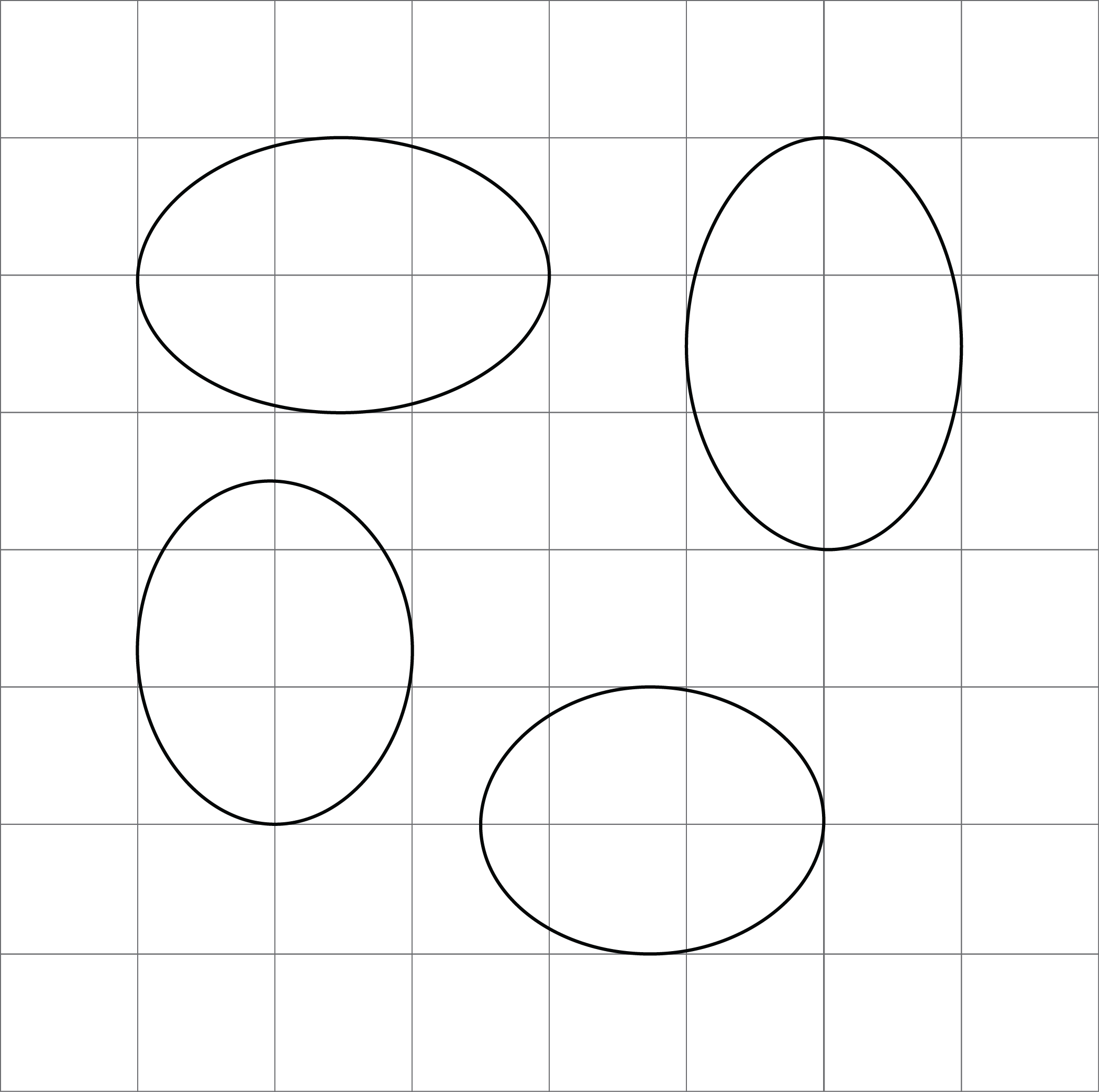
Student Response
For access, consult one of our IM Certified Partners.
Student Facing
Are you ready for more?
You can use 12 toothpicks to create a polygon with an area of five square toothpicks, like this:
Can you use exactly 12 toothpicks to create a polygon with an area of four square toothpicks?
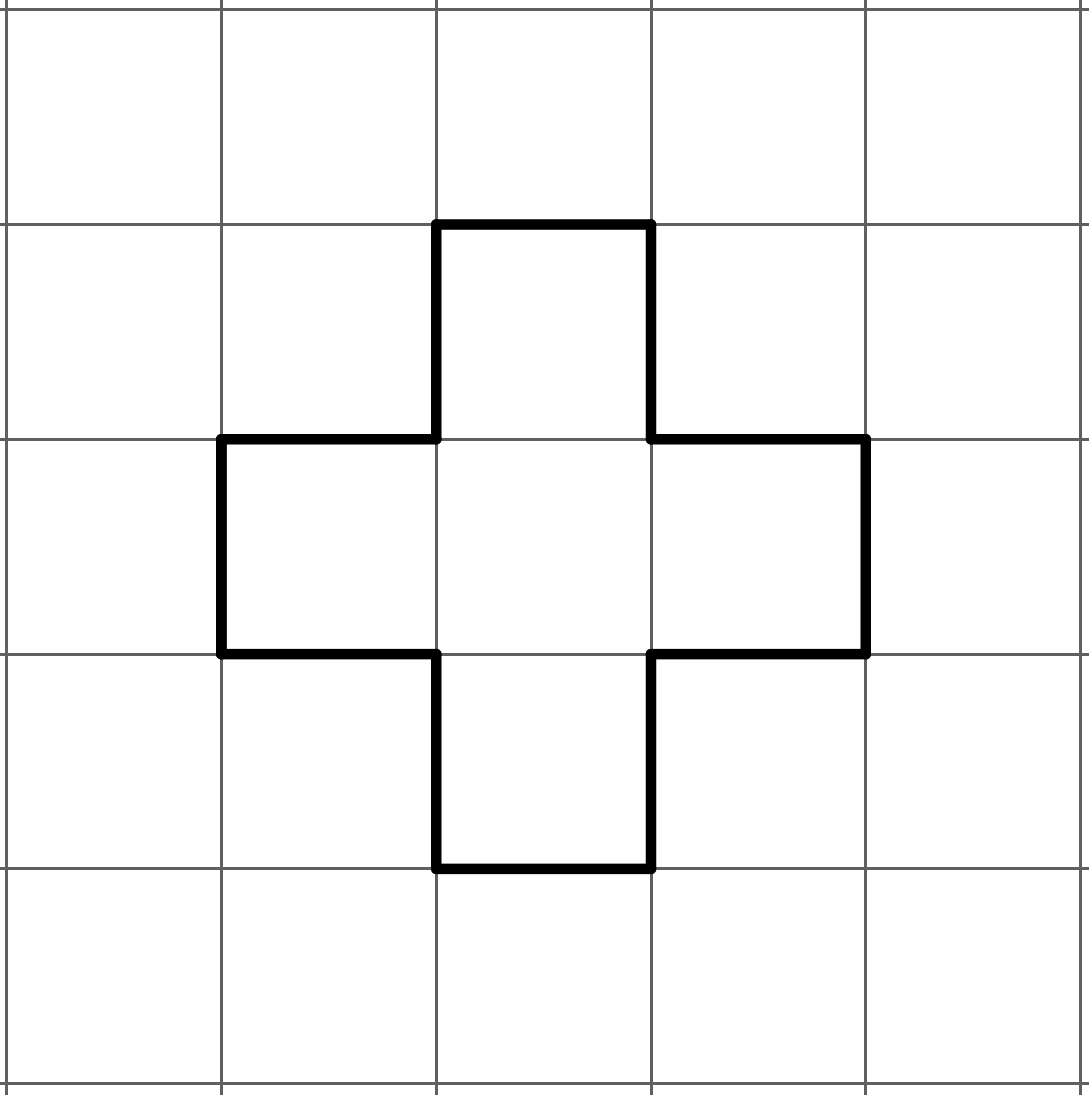
Student Response
For access, consult one of our IM Certified Partners.
Activity Synthesis
Invite groups to explain how they determined that the upper ovals are not congruent to the lower ones, with at least one explanation focusing on differing measurable attributes (for example length and width). Also invite previously selected groups to show how they demonstrated that the two upper (and two lower) ovals are congruent, focusing on the precise language of transformations.
Emphasize that showing that two oval shapes are congruent requires using the definition of congruence: is it possible to move one shape so that it matches up perfectly with the other using only rigid transformations? Experimentation with transformations is essential when showing that two of the ovals match up because, unlike polygons, these shapes are not determined by a finite list of vertices and side lengths.
Students have seen that rectangles that have the same side lengths are congruent and will later find criteria for determining when two triangles are congruent. For more complex curved shapes, the definition of congruence is required.
13.3: Corresponding Points in Congruent Figures (15 minutes)
Activity
Corresponding sides of congruent polygons have the same length. For shapes like ovals, examined in the previous activity, there are no “sides.” However, if points \(A\) and \(B\) on one figure correspond to points \(A’\) and \(B’\) on a congruent figure, then the length of segment \(AB\) is equal to the length of segment \(A’B’\) because translations, rotations, and reflections do not change distances between points. Students have seen and worked with this idea in the context of polygons and their sides. This remains true for other shapes as well.
Because rigid motions do not change distances between points, corresponding points on congruent figures (even oddly shaped figures!) are the same distance apart. This is one more good example MP7 as the fundamental mathematical property of rigid motions is that they do not change distances between corresponding points: this idea holds for any points on any congruent figures.
There are two likely strategies for identifying corresponding points on the two corresponding figures:
- Looking for corresponding parts of the figures such as the line segments
- Performing rigid motions with tracing paper to match the figures up
Both are important. Watch for students using each technique and invite them to share during the discussion.
Launch
Keep students in the same groups. Allow for 5 minutes of quiet work time followed by sharing with a partner and a whole-class discussion. Provide access to geometry toolkits (rulers are needed for this activity).
Supports accessibility for: Language; Organization
Student Facing
Here are two congruent shapes with some corresponding points labeled.
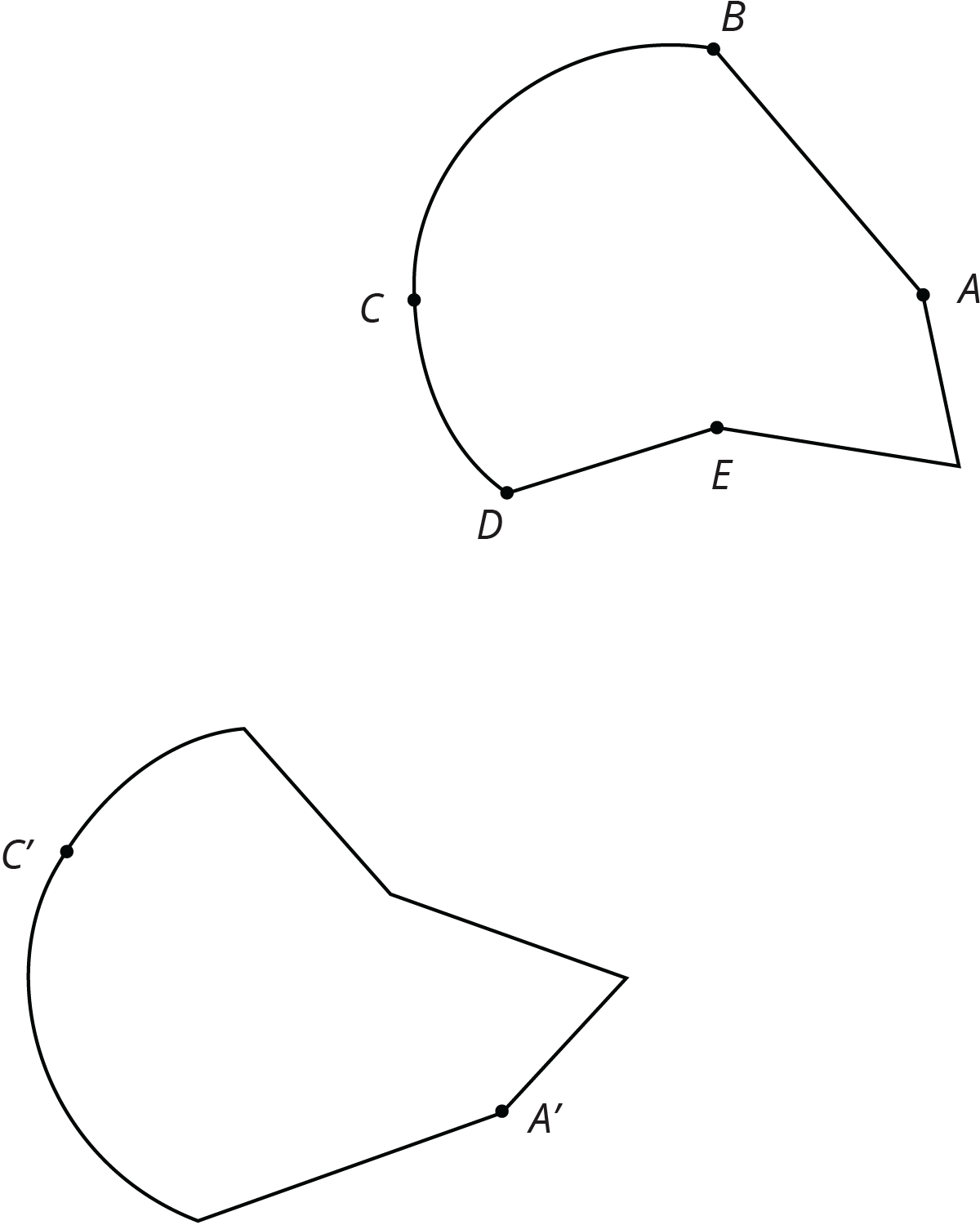
-
Draw the points corresponding to \(B\), \(D\), and \(E\), and label them \(B’\), \(D’\), and \(E’\).
-
Draw line segments \(AD\) and \(A’D’\) and measure them. Do the same for segments \(BC\) and \(B’C’\) and for segments \(AE\) and \(A’E’\). What do you notice?
-
Do you think there could be a pair of corresponding segments with different lengths? Explain.
Student Response
For access, consult one of our IM Certified Partners.
Activity Synthesis
Ask selected students to show how they determined the points corresponding to \(B\), \(D\), and \(E\), highlighting different strategies (identifying key features of the shapes and performing rigid motions). Ask students if these strategies would work for finding \(C'\) if it had not been marked. Performing rigid motions matches the shapes up perfectly, and so this method allows us to find the corresponding point for any point on the figure. Identifying key features only works for points such as \(A\), \(B\), \(D\), and \(E\), which are essentially like vertices and can be identified by which parts of the figures are “joined” at that point.
While it is challenging to test “by eye” whether or not complex shapes like these are congruent, the mathematical meaning of the word “congruent” is the same as with polygons: two shapes are congruent when there is a sequence of translations, reflections, and rotations that match up one shape exactly with the other. Because translations, reflections, and rotations do not change distances between points, any pair of corresponding segments in congruent figures will have the same length.
If time allows, have students use tracing paper to make a new figure that is either congruent to the shape in the activity or slightly different. Display several for all to see and poll the class to see if students think the figure is congruent or not. Check to see how the class did by lining up the new figure with one of the originals. Work with these complex shapes is important because we tend to rely heavily on visual intuition to check whether or not two polygons are congruent. This intuition is usually reliable unless the polygons are complex or have very subtle differences that cannot be easily seen. The meaning of congruence in terms of rigid motions and our visual intuition of congruence can effectively reinforce one another:
- If shapes look congruent, then we can use this intuition to find the right motions of the plane to demonstrate that they are congruent.
- Through experimenting with rigid motions, we increase our visual intuition about which shapes are congruent.
Design Principle(s): Maximize meta-awareness; Support sense-making
13.4: Astonished Faces (10 minutes)
Optional activity
Up to this point, students have mostly worked with simple figures, that is, figures which are individual and complete and not naturally divided into parts. In this activity, students examine two figures made out of disjoint pieces: the outline of a face, two eyes, and a mouth. The disjoint pieces are congruent to one another taken in isolation. But they are not congruent taken as a collective whole because the relative positions of the eyes, mouth, and face outline are different in the two images.
This activity reinforces a goal of the previous activity. In order for two shapes to be congruent, all pairs of corresponding points in the two images must be the same distance apart. For the example studied here, this is true for many pairs of points. For example, if we choose a pair of points in one mouth and the corresponding pair of points in the other mouth, they will be the same distance from one another. The same is true if we choose a pair of points in the eye of one figure and a corresponding pair of points in an eye of the other figure. But if we choose one point in each eye or one point in the mouth and one point in an eye, the distances change. Strategically selecting corresponding points whose distance is not the same in the two figures is MP7 as it requires a solid understanding of the meaning of congruence and corresponding parts.
Monitor for students who:
- Identify that the parts (face outline, eyes, mouth) of the two faces are congruent.
- Identify that the relative position of the parts in the two faces are not the same.
Choose students to share these observations at the beginning of the discussion.
Launch
Arrange students in groups of 2. Provide access to geometry toolkits. Give 5 minutes quiet work time followed by time to share their results and reasoning with their partner, then a whole-class discussion.
Supply tracing paper if desired. However, in this case, students should be encouraged to look for other ways to know the shapes are not congruent beyond saying that they do not match up when students try to place one on top of the other.
Supports accessibility for: Organization; Attention
Student Facing
Are these faces congruent? Explain your reasoning.
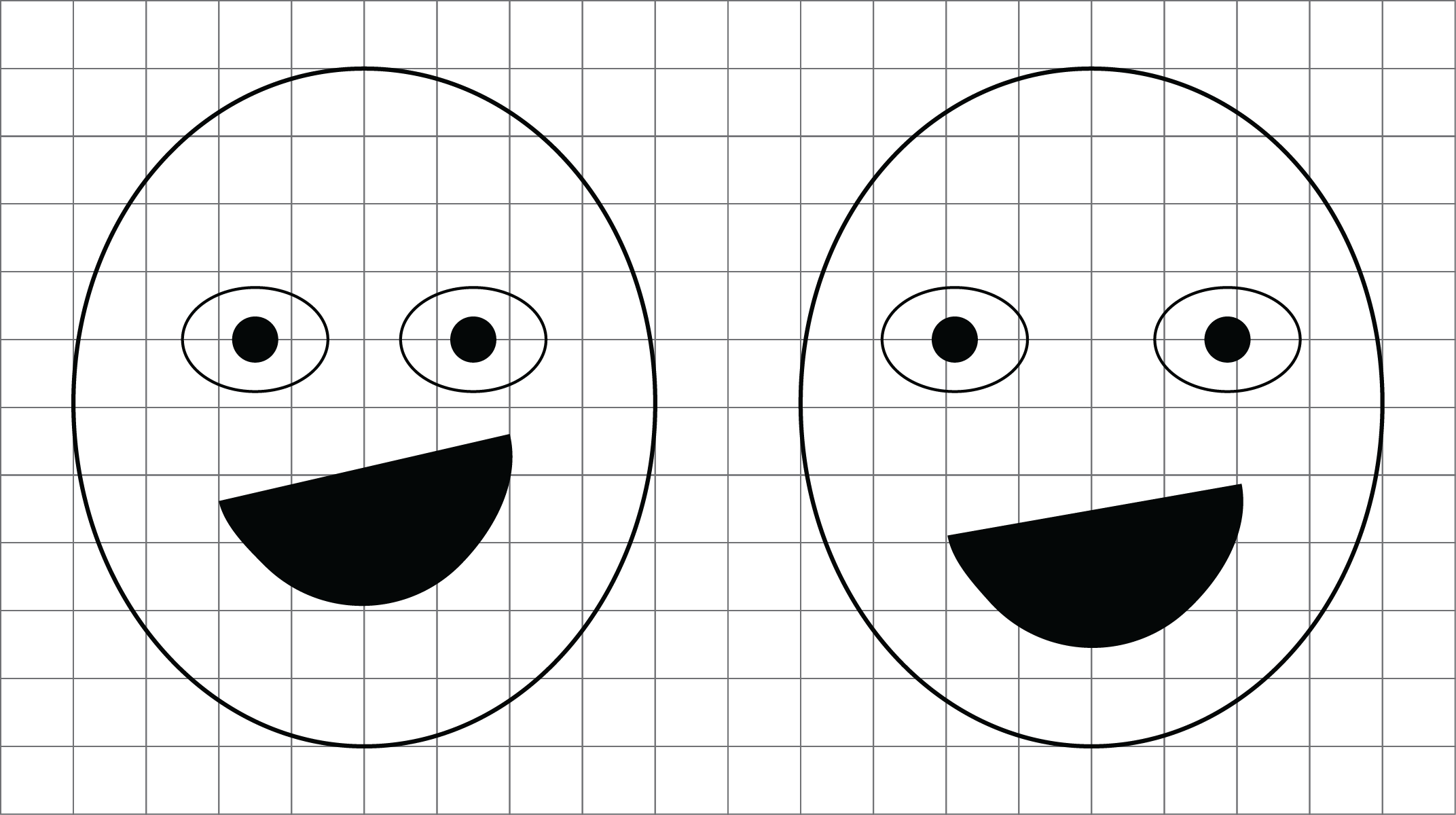
Student Response
For access, consult one of our IM Certified Partners.
Anticipated Misconceptions
Students may think the two faces are congruent if all of the pieces of the faces match up, however the translations for each to match up are different. This may happen when students use tracing paper to test each individual piece. Ask students to find the distance between a pair of corresponding points that is not the same in the two faces. For example, ask them to measure the distance between a point on the left eye and point on the right eye and the corresponding distance in the second face.
Activity Synthesis
Ask selected students if the face outlines are congruent. What about the eyes? The mouths? Have them share their method for checking, emphasizing precise language that uses rigid motions (translations are all that is needed).
Ask selected students if the two faces, taken as a whole, are congruent. What corresponding points were they able to identify that were not the same distance apart in the two faces? Distance between the eyes, from the eyes to the mouth, from the eyes to the face outline, or from the mouth to face outline are all valid responses.
Even though the individual parts of the two faces are congruent, the two faces are not congruent. We could find one translation that takes the outline of one face to the outline of the other and similarly we could find a translation taking the left eye, right eye, and mouth of one figure to the left eye, right eye, and mouth of the other. But these translations are different. In order for two figures to be congruent, there must be one sequence of transformations that match all parts of one figure perfectly with the other.
Design Principle(s): Optimize output (for explanation)
Lesson Synthesis
Lesson Synthesis
This lesson wraps up work on congruence. Important points to highlight include:
- Two figures are congruent when there is a sequence of translations, rotations, and reflections matching up one figure with the other
- To show that two figures are not congruent it is enough to find corresponding points on the figures which are not the same distance apart, or corresponding angles that have different measure
- The distance between pairs of corresponding points in congruent figures is the same (this says that corresponding side lengths on polygons have the same length but it applies to curved figures also or to any pair of points, not necessarily vertices, on polygons)
- Some figures are made up of several parts. For example, these two designs are each made up of three circles:

All six of the circles are congruent (as we could check using tracing paper). But in the left design, each circle touches both of the other two, but this is not true in the design on the right. The distances between any two circle centers in one design will be different than the distances between any two circle centers in the other design.
13.5: Cool-down - Explaining Congruence (5 minutes)
Cool-Down
For access, consult one of our IM Certified Partners.
Student Lesson Summary
Student Facing
To show two figures are congruent, you align one with the other by a sequence of rigid transformations. This is true even for figures with curved sides. Distances between corresponding points on congruent figures are always equal, even for curved shapes. For example, corresponding segments \(AB\) and \(A'B'\) on these congruent ovals have the same length:
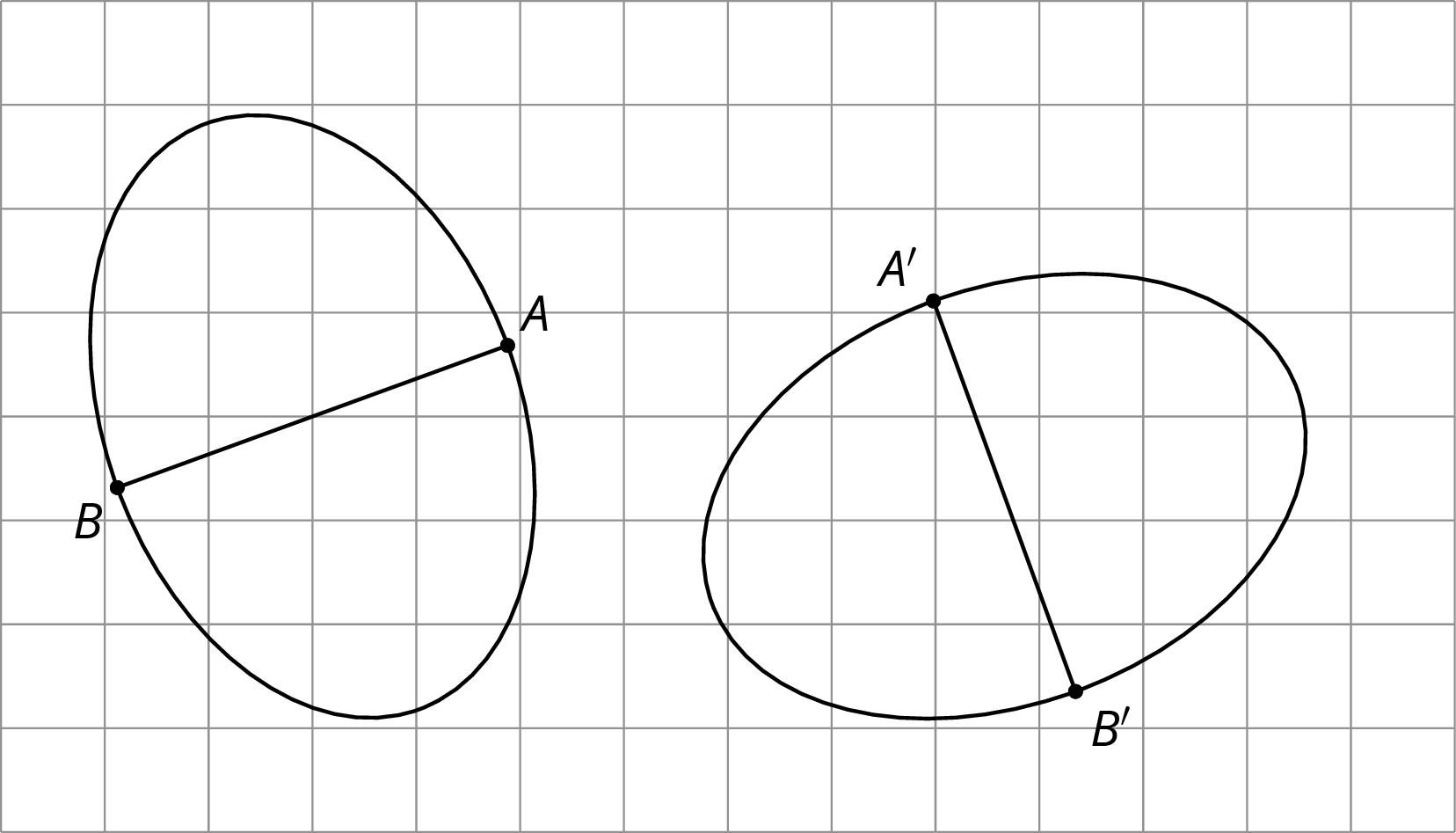
To show two figures are not congruent, you can find parts of the figures that should correspond but that have different measurements.
For example, these two ovals don’t look congruent.
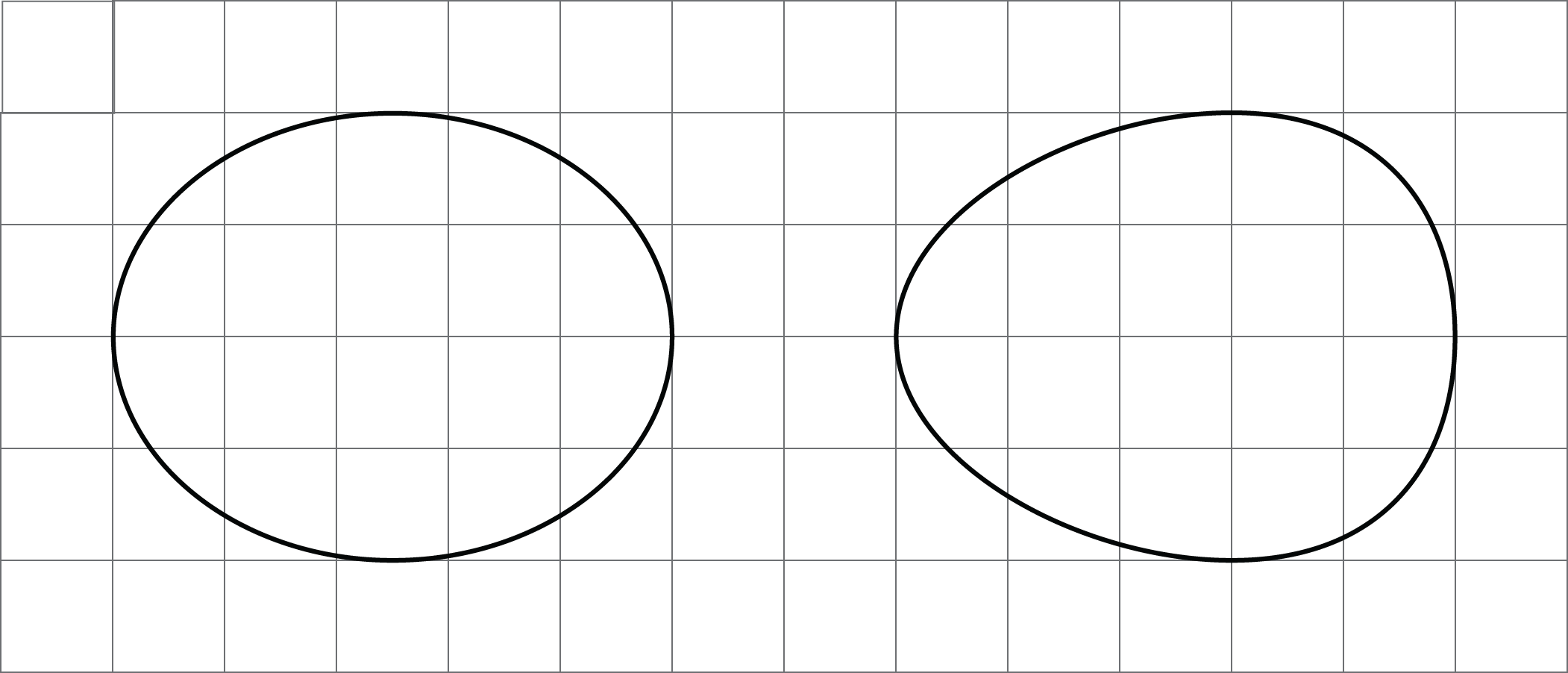
On both, the longest distance is 5 units across, and the longest distance from top to bottom is 4 units. The line segment from the highest to lowest point is in the middle of the left oval, but in the right oval, it’s 2 units from the right end and 3 units from the left end. This proves they are not congruent.
